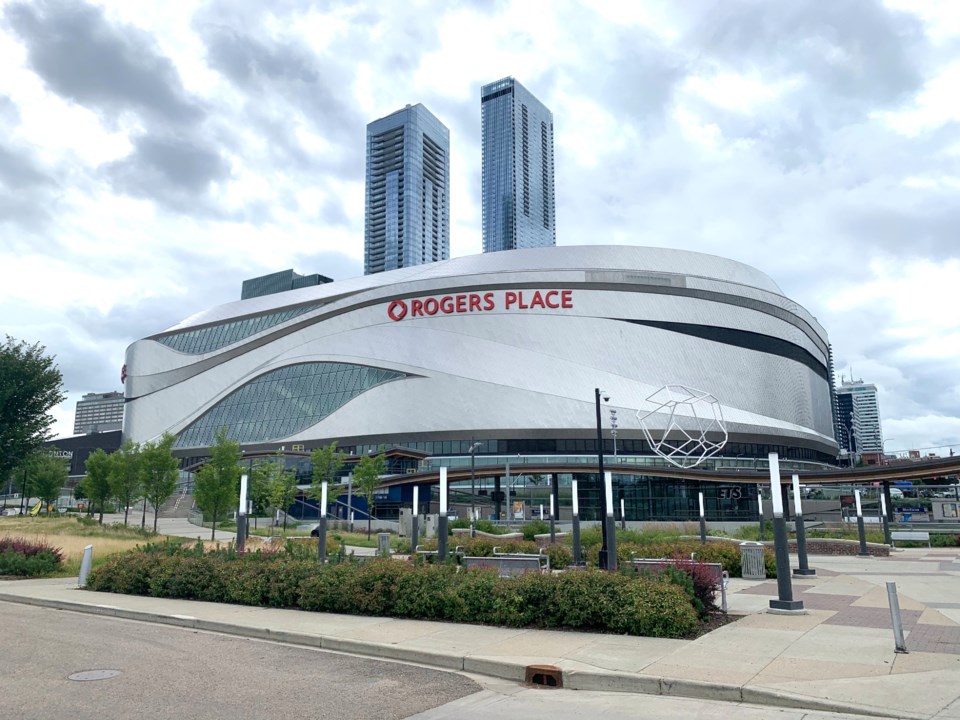NEWS
Alberta downtowns lead Canada as workers return to offices

Rogers Place in Edmonton is a linch pin in the return of people to the city’s downtown in the wake of COVID-19. / Submitted
With offices across the country reopening for in-person work, downtown Edmonton and Calgary have rebounded the fastest.
The latest data from the Avison Young Vitality Index show that foot traffic in downtown Edmonton the week of April 4 was 78 per cent of what it was March 2, 2020. This is the strongest performance among the 23 cities across North America that Avison Young’s index tracks.
“Edmonton is really seeing a significant bounceback in the number of people that are frequenting our downtown,” said Cory Wosnack, managing director with Avison Young in Edmonton.
Calgary ranks second in Canada and third in North America with a return rate of 54 per cent.
This compares to a 38 per cent return rate in downtown Vancouver and a 28 per cent return rate to downtown Toronto.
Wosnack says Rogers Place, home to the Edmonton Oilers, has been “a really integral part” of the shift.
“It’s keeping people in the towers, too,” he says. “The social attractiveness of being downtown through entertainment is a part of it. … That’s been really helpful to getting these office buildings filled again.”
Wosnack says the return of in-person learning at the University of Alberta, which has a downtown campus, as well as MacEwan University and NorQuest College Edmonton, has also helped.
“Successful downtown districts are defined more by the social districts than they are by the business districts now,” he says. “The more successful the ground-level businesses are, the more activated at street-level, the more opportunities for these towers to be filled.”
This has benefitted retail businesses, helping support the recovery of Alberta’s economy. With better weather and tourism season just around the corner, Wosnack expects the trend to strengthen.
“There are so many industries hiring right now,” he said. “I have never seen so many businesses trying to hire.”
While downtowns across the country are seeing workers return to offices, Wosnack said the weaker performance of Toronto and Vancouver may reflect the greater importance of public transit in these cities versus those in Alberta.
“When people are riding the train or buses in a post-COVID perspective, there’s a health hesitancy to getting onto crowded trains,” he said. “But Edmonton doesn’t have that. Edmonton is quite a car-dependent community. … Because people can take their own transportation to get to where they need to go, that’s allowed the movement of people to a much higher degree because there’s no health hesitancy.”
The latest data from TransLink, which oversees transit in Metro Vancouver, indicate that ridership is up about 49 per cent versus a year earlier through November 2021 but continues to be about 35 per cent below pre-pandemic levels.
